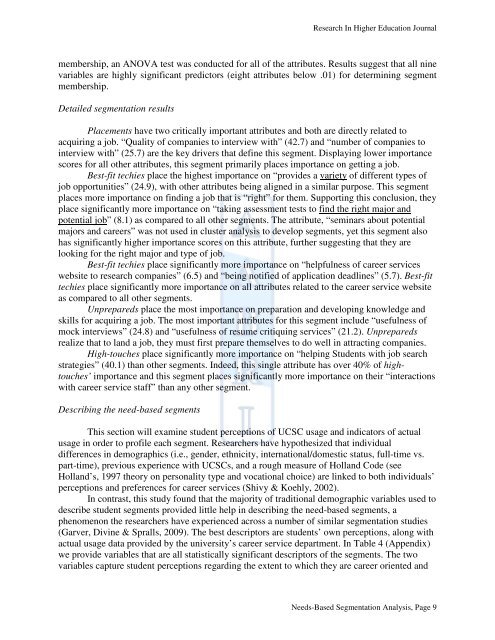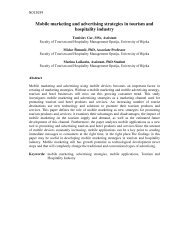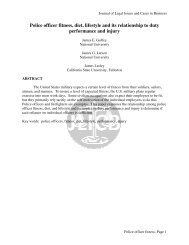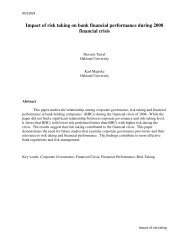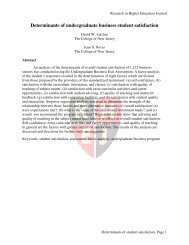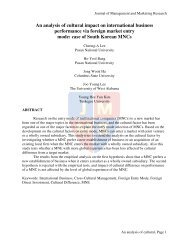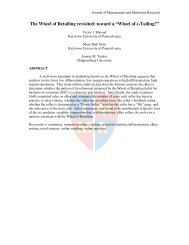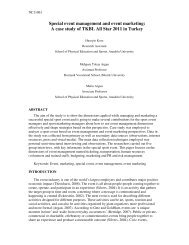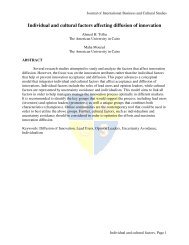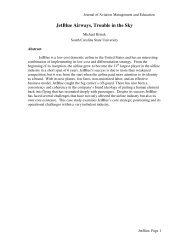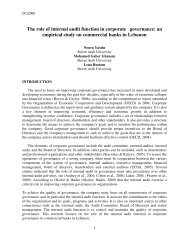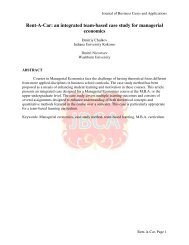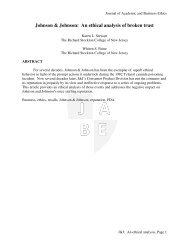Need-Based Segmentation Analysis of University Career Services ...
Need-Based Segmentation Analysis of University Career Services ...
Need-Based Segmentation Analysis of University Career Services ...
Create successful ePaper yourself
Turn your PDF publications into a flip-book with our unique Google optimized e-Paper software.
Research In Higher Education Journal<br />
membership, an ANOVA test was conducted for all <strong>of</strong> the attributes. Results suggest that all nine<br />
variables are highly significant predictors (eight attributes below .01) for determining segment<br />
membership.<br />
Detailed segmentation results<br />
Placements have two critically important attributes and both are directly related to<br />
acquiring a job. “Quality <strong>of</strong> companies to interview with” (42.7) and “number <strong>of</strong> companies to<br />
interview with” (25.7) are the key drivers that define this segment. Displaying lower importance<br />
scores for all other attributes, this segment primarily places importance on getting a job.<br />
Best-fit techies place the highest importance on “provides a variety <strong>of</strong> different types <strong>of</strong><br />
job opportunities” (24.9), with other attributes being aligned in a similar purpose. This segment<br />
places more importance on finding a job that is “right” for them. Supporting this conclusion, they<br />
place significantly more importance on “taking assessment tests to find the right major and<br />
potential job” (8.1) as compared to all other segments. The attribute, “seminars about potential<br />
majors and careers” was not used in cluster analysis to develop segments, yet this segment also<br />
has significantly higher importance scores on this attribute, further suggesting that they are<br />
looking for the right major and type <strong>of</strong> job.<br />
Best-fit techies place significantly more importance on “helpfulness <strong>of</strong> career services<br />
website to research companies” (6.5) and “being notified <strong>of</strong> application deadlines” (5.7). Best-fit<br />
techies place significantly more importance on all attributes related to the career service website<br />
as compared to all other segments.<br />
Unprepareds place the most importance on preparation and developing knowledge and<br />
skills for acquiring a job. The most important attributes for this segment include “usefulness <strong>of</strong><br />
mock interviews” (24.8) and “usefulness <strong>of</strong> resume critiquing services” (21.2). Unprepareds<br />
realize that to land a job, they must first prepare themselves to do well in attracting companies.<br />
High-touches place significantly more importance on “helping Students with job search<br />
strategies” (40.1) than other segments. Indeed, this single attribute has over 40% <strong>of</strong> hightouches’<br />
importance and this segment places significantly more importance on their “interactions<br />
with career service staff” than any other segment.<br />
Describing the need-based segments<br />
This section will examine student perceptions <strong>of</strong> UCSC usage and indicators <strong>of</strong> actual<br />
usage in order to pr<strong>of</strong>ile each segment. Researchers have hypothesized that individual<br />
differences in demographics (i.e., gender, ethnicity, international/domestic status, full-time vs.<br />
part-time), previous experience with UCSCs, and a rough measure <strong>of</strong> Holland Code (see<br />
Holland’s, 1997 theory on personality type and vocational choice) are linked to both individuals’<br />
perceptions and preferences for career services (Shivy & Koehly, 2002).<br />
In contrast, this study found that the majority <strong>of</strong> traditional demographic variables used to<br />
describe student segments provided little help in describing the need-based segments, a<br />
phenomenon the researchers have experienced across a number <strong>of</strong> similar segmentation studies<br />
(Garver, Divine & Spralls, 2009). The best descriptors are students’ own perceptions, along with<br />
actual usage data provided by the university’s career service department. In Table 4 (Appendix)<br />
we provide variables that are all statistically significant descriptors <strong>of</strong> the segments. The two<br />
variables capture student perceptions regarding the extent to which they are career oriented and<br />
<strong>Need</strong>s-<strong>Based</strong> <strong>Segmentation</strong> <strong>Analysis</strong>, Page 9


